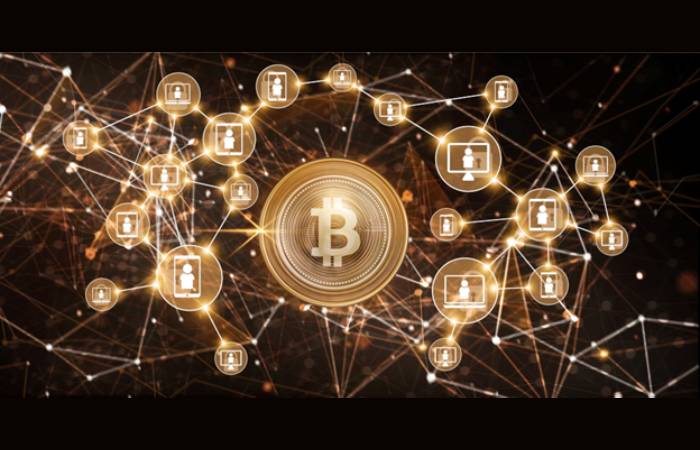The blockchain ecosystem is growing and changing quickly. Startups and companies are testing out new models and trying to find their place in the landscape. Investors are looking for the next big thing, courting companies in hopes of finding the next unicorn.
Governments and regulators are starting to take notice and trying to catch up, developing frameworks for those who want to do business with them. For this reason, it’s important to understand some of the basics of how the blockchain works, but also to know more about what’s happening within its ecosystem beyond just the technology itself.
Table of Contents
What is a Blockchain Ecosystem?
The blockchain is a decentralized ledger that tracks transactions in an open, transparent manner. Unlike traditional ledgers, which are stored in one central location and are only accessible to authorized parties, the blockchain is distributed across all computers participating in the cryptocurrency’s network. It keeps track of each transaction using a system of cryptography to verify the legitimacy of each user.
A blockchain ecosystem can be an excellent way to meet like-minded people who share your interests. It also gives your company the opportunity to network with other companies that may have similar goals. As the blockchain ecosystem grows larger, so will the potential for new customers and business opportunities.
Bitcoin is the most well-known example of a blockchain ecosystem, and it’s what people typically think of when they hear the word “blockchain.” Ethereum is another popular example; its ecosystem uses blockchain technology to develop and run applications on the network.
The Cardano blockchain is a smart contract platform similar to Ethereum, but with a focus on making the platform as secure as possible. However, despite the bearish market trend that has gripped most digital assets, the Cardano price has remained relatively stable over the last few months.
What Makes Up A Blockchain Ecosystem?
The Blockchain Ecosystem is a group of individuals that work together to make things happen. The Blockchain Ecosystem is made up of three main components:
- Developers: People who create the software that works with the blockchain. They are also responsible for updating, fixing and adding new features to the blockchain.
- Users: People who use the blockchain to make purchases, send money and store their data.
- Businesses: These are companies or organizations that either use blockchain technology or are in the process of adopting it into their current business structure.
A blockchain ecosystem includes (but is not limited to) the following components:
Blocks – these contain the transactions and data that is used in the system
Consensus algorithms – these are used to verify that the blocks are valid for inclusion in the chain.
Block headers – these contain information about when a block was created, and is used to determine the validity of a block.
Hash function – this is used to sign transactions and data in a blockchain.
Peer-to-peer network – this allows blocks to be distributed throughout the network, and nodes can then verify them and add them to their respective copies of the blockchain.
What Happens In a Blockchain Transaction?
Whenever two parties execute a digital currency transaction together, information about that trade is entered onto blocks of data called “blocks” on a “chain.” The chain is effectively an ongoing record of all the transactions that have ever taken place within the network.
So if A sends 1 bitcoin to B in one transaction, and then B sends 1 bitcoin to C in another transaction, these two transactions will both be recorded on the same block. That block is then broadcast to everyone on the network so that everyone can see that these transactions have taken place. When A wants to send 1 bitcoin to C, A will have to ensure that his or her account balance adds up with all previous transactions.
But instead of just one bank keeping track of your money, there’s a whole network of computers that do it together. That way, they can all agree on the location of your money at any given time, without you having to go through a bank to access your own funds. Because there are so many computers keeping track of everything at once, this process is super fast.
The transactions that happen on a blockchain only need to be verified by one computer before they’re added to the chain—and the computers verifying these transactions don’t need to trust each other because they’re not sharing information with anyone else. This setup has proven incredibly resilient when it comes to cyberattacks and hacking attempts.
Benefits Of Blockchain

The advantages of a blockchain are numerous and make it particularly useful for applications where you need to ensure the accuracy and integrity of information. It can be used to:
- Create an immutable record of events such as payments, contract signings, or identity documents.
- Maintain a secure log of data changes such as balances or inventory amounts.
- Store information that would normally be held privately, like voting records or patient medical records.
- Provide proof that a particular piece of data was created at a given time, by using hashes generated when the data was created.
- It allows market participants to keep track of digital currency transactions without central recordkeeping.
- Blockchain technology offers a way for information to be distributed but not duplicated. A blockchain database isn’t stored in any single location, meaning the records it keeps are truly public and easily verifiable.

![An Overview of Blockchain Ecosystem [2024]](https://www.computertechreviews.com/wp-content/uploads/2023/04/An-Overview-of-Blockchain-Ecosystem-1200x675.jpg)